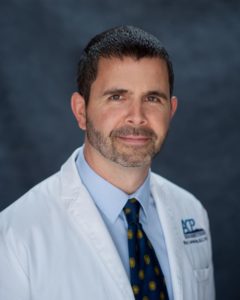PCMS GENERAL MEMBERSHIP MEETING ON ZOOM on Wednesday, Nov. 12th The Pima County Medical Society…
The end of the beginning of the COVID-19 pandemic
“Now this is not the end. It is not even the beginning of the end. But it is, perhaps the end of the beginning.”
— Winston Churchill
It has been several months since Tucson has had to adapt to the worldwide coronavirus outbreak and Memorial Day was a fitting time to reflect on what we have learned. As a primary care physician in Tucson I have concluded two things: First, COVID-19 is both better and worse than people think it is; and second, the presence of the Chuck Huckelberry Loop has led to a 22.71 percent decrease in antidepressant use in Tucson.
 First: The virus is not as bad as people think it is. On average, people with coronavirus infect two to 2.5 other people. This is a little worse than seasonal influenza but much better than diseases like measles, where the infection rate averages 12-18 people. Also, many older people overestimate their risk of dying if they are infected. Current estimates give the death rate at 15 percent for people over 80 and about 8 percent for people in their 70s, where many believe more than 50 percent in those age groups die of the infection. Lastly, face mask usage seems effective in decreasing the spread of COVID-19. Countries where face mask use is universal have dramatically lower risk of viral transmission.
First: The virus is not as bad as people think it is. On average, people with coronavirus infect two to 2.5 other people. This is a little worse than seasonal influenza but much better than diseases like measles, where the infection rate averages 12-18 people. Also, many older people overestimate their risk of dying if they are infected. Current estimates give the death rate at 15 percent for people over 80 and about 8 percent for people in their 70s, where many believe more than 50 percent in those age groups die of the infection. Lastly, face mask usage seems effective in decreasing the spread of COVID-19. Countries where face mask use is universal have dramatically lower risk of viral transmission.
Second: The virus is worse than people think it is. Although the average infection rate is approximately two people per individual exposure, there are reports of “super spreaders” where one person can infect dozens of other people at large gatherings. It takes, on average, five days after exposure to show symptoms of coronavirus. Consequently, some infected people within the first five days of exposure can pass along the virus before symptoms develop, and some may remain asymptomatic and unwittingly infect others. These factors contribute to difficulty in preventing the spread of COVID-19, and it makes sense to avoid large gatherings.
For those who believe the Swedish coronavirus response model is a good one for the United States to emulate: Please consider the significant differences between our countries. Sweden has universal health care, 10 percent more hospital beds and a healthier population. Their obesity rate is about 70 percent less than in our country, which is significant when the risk of death in obese patients may be near-double that of the non-obese.
I have heard good reasons why the economy must open: Primarily, we cannot afford to shutter our economy for the length of time it will require to develop an effective vaccine. However, there are few valid reasons why people should not wear a mask when shopping and even fewer why people should not wash their hands regularly. And, please, stay home if you are ill.
We know so much more about the novel coronavirus than we did months ago. Our ability to diagnose infections has improved. In Tucson, we now have enough testing materials to test symptomatic patients and we can also now test for antibodies to the infection (although how accurate the test results are, or what exactly the results mean, are debatable). The next stages in the pandemic include research to identify effective drugs for treatment of infection (remdesivir is currently in, hydroxychloroquine is out) and developing an effective vaccine to prevent or reduce future infection.
Roy Loewenstein, MD is a primary care physician and a Past President at Pima County Medical Society and is a current member.
